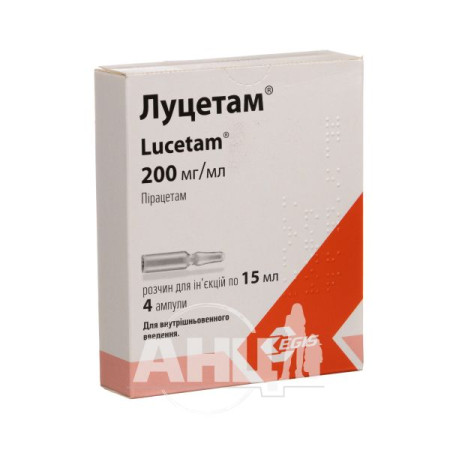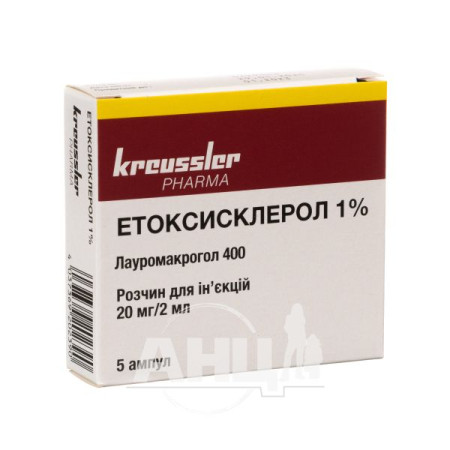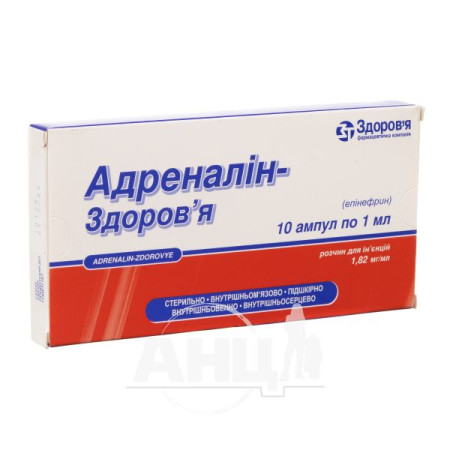Braxon solution for injection 40 mg/ml ampoule 2 ml No. 10

Instructions Braxon solution for injection 40 mg/ml ampoule 2 ml No. 10
Composition
active ingredient: tobramycin;
1 ml of solution contains tobramycin (in the form of sulfate) 40 mg;
Excipients: disodium edetate, anhydrous sodium sulfite, water for injections.
Dosage form
Solution for injection.
Main physicochemical properties: transparent colorless or yellowish liquid.
Pharmacotherapeutic group
ATX code.
Antibacterial drugs. Other aminoglycosides.
ATX code J01G B01.
Pharmacological properties
Pharmacodynamics
A broad-spectrum antibiotic from the aminoglycoside group. It acts bacteriostatically (blocks the 30S subunit of ribosomes and disrupts protein synthesis). In higher concentrations, it disrupts the function of cytoplasmic membranes, causing cell death.
Highly active against gram-negative microorganisms (Pseudomonas aeruginosa, Acinetobacter spp., Escherichia coli, Klebsiella spp., Serratia spp., Providencia spp., Enterobacter spp., Proteus spp., Salmonella spp., Shigella spp.), as well as some gram-positive microorganisms: Staphylococcus spp. (including those resistant to penicillins, cephalosporins), some strains of Streptococcus spp.
Aminoglycosides in combination with penicillins or some cephalosporins are effective in treating infections caused by Pseudomonas aeruginosa or Enterococcus faecalis.
Pharmacokinetics
After intramuscular administration, the drug is rapidly distributed to organs and tissues. Penetrates the placental barrier. Cmax in blood serum is detected 40-90 minutes after administration; with intramuscular administration of the drug at a dose of 1 mg/kg of the patient's body weight, Cmax in plasma is 3-7 mg/l. The therapeutic concentration is maintained for 8 hours. T1/2 with normal renal function is 2 hours. 80-84% of the administered dose is excreted by the kidneys unchanged, 10-20% through the intestines. T1/2 in newborns is 5-8 hours, in older children 2.5-4 hours. The final T1/2 is more than 100 hours (release from intracellular depots).
In patients with renal failure T1/2 varies depending on the degree of failure up to 100 hours, in patients with cystic fibrosis 1-2 hours, in patients with burns and hyperthermia it may be shorter compared to average values due to increased clearance. During hemodialysis, 25-70% of the administered dose is removed.
Indication
Severe infectious diseases caused by microorganisms sensitive to the drug:
- infectious diseases of the central nervous system, including meningitis, septicemia and neonatal sepsis;
- infectious diseases of the abdominal cavity, including peritonitis;
- complicated and recurrent urinary tract infections, such as pyelonephritis and cystitis;
- infectious diseases of the lower respiratory tract, including pneumonia, bronchopneumonia and acute bronchitis, lung abscess;
- diseases of the skin, bones and soft tissues, including burns.
Severe staphylococcal infections, in cases where the patient is contraindicated for penicillin and other drugs with a lower risk of toxicity and when the use of tobramycin is appropriate, in the opinion of the physician, as confirmed by the results of bacterial susceptibility testing.
Contraindication
Hypersensitivity to tobramycin or other aminoglycoside antibiotics.
Neuritis of the auditory nerve, severe chronic renal failure.
Interaction with other medicinal products and other types of interactions
Tobramycin enhances the effect of non-depolarizing muscle relaxants.
Reduces the effect of antimyasthenic drugs.
Aminoglycosides, cephalosporins, vancomycin, polymyxin, and diuretics increase the risk of oto- and nephrotoxicity.
Beta-lactam antibiotics weaken the effect.
Intravenous administration of indomethacin reduces the renal clearance of tobramycin, increasing its blood concentration, and increases the half-life (T1/2) (may require adjustment of the dosing regimen).
Methoxyflurane increases the risk of adverse reactions.
Drugs for inhalation general anesthesia (halogenated carbohydrates), narcotic analgesics, transfusion of large volumes of blood with citrate preservatives as anticoagulants, drugs that block neuromuscular transmission, enhance neuromuscular blockade.
Application features
Use with caution in renal failure, botulism, myasthenia gravis, parkinsonism, dehydration, hearing impairment.
During treatment, it is necessary to monitor the function of the kidneys, liver, vestibular apparatus and hearing (at least once a week), and to monitor the concentration of tobramycin in the blood serum, which should not exceed 8 μg/ml.
In case of unsatisfactory audiometric tests, the dose of the drug is reduced or treatment is discontinued.
The risk of oto- and nephrotoxicity increases significantly with prolonged plasma concentrations above 12 μg/ml.
The likelihood of developing nephrotoxicity is higher in patients with impaired renal function, as well as when using the drug in high doses or for a long time (in this category of patients, daily monitoring of renal function is necessary).
Aminoglycosides pass into breast milk in small amounts (since they are poorly absorbed from the gastrointestinal tract, no complications associated with them have been recorded in infants).
In the absence of positive clinical dynamics, it is worth remembering the possibility of the development of resistant microorganisms. In such cases, it is necessary to cancel the treatment and start appropriate therapy.
When the volume of distribution of the drug increases (burns, peritonitis, extraperitoneal infection), the dose should be increased to achieve effective concentration, and in critical conditions and in young patients with high cardiac output and glomerular filtration rate, the rate of administration should be increased.
Use during pregnancy or breastfeeding
Tobramycin should be administered to pregnant women only if the potential benefit justifies the potential risk. Tobramycin is excreted in breast milk. Breastfeeding should be discontinued if treatment is necessary.
Ability to influence reaction speed when driving vehicles or other mechanisms
The drug is used in a hospital setting.
Method of administration and doses
The drug is administered intramuscularly (IM) or intravenously (IV) by drip. For IM administration, the appropriate dose of the drug is administered directly from the ampoule.
For intravenous administration, the solution is diluted in 100-200 ml of 0.9% sodium chloride solution or 5% glucose solution, and administered over 20-60 minutes.
A single dose for adults and children over 1 year of age is 1 mg/kg, daily dose is 3 mg/kg, maximum daily dose is 5 mg/kg.
Children from 1 week to 1 year: 6-7.5 mg/kg/day, divided into 3-4 equal doses (2-2.5 mg/kg every 8 hours or 1.5-1.89 mg/kg every 6 hours).
Premature or newborn infants up to 1 week of age: up to 4 mg/kg/day, divided into 2 doses every 12 hours. The usual duration of treatment is 7-10 days. In severe and complicated infections, a longer course of therapy is possible (with monitoring of renal function, hearing and vestibular status, since the manifestation of neurotoxicity is most likely with a course of treatment longer than 10 days).
In chronic renal failure, as well as for elderly patients, the dose should be reduced and the intervals between administrations increased. The dose is calculated as follows: the interval between administrations in hours is equal to the serum creatinine concentration multiplied by 8; the doses remain the same as with normal renal function; the initial single dose of the drug is similar to the dose administered to patients with normal renal function, and is 1 mg/kg.
Children
Used from the first days of life.
Overdose
Symptoms: toxic reactions (hearing loss, ataxia, dizziness, urination disorder, thirst, decreased appetite, nausea, vomiting, ringing in the ears or feeling of blockage in the ears, nephronecrosis - increased urea concentration, hypercreatininemia, proteinuria, oliguria), paralysis of the respiratory muscles.
Treatment: patients with normal kidney function are given fluid infusion and forced diuresis; patients with impaired kidney function - hemodialysis or peritoneal dialysis. In case of neuromuscular blockade - anticholinesterase drugs, calcium salts; in case of respiratory arrest - artificial ventilation of the lungs, other symptomatic and supportive therapy.
Adverse reactions
On the part of the digestive system: nausea, vomiting, diarrhea, liver dysfunction (increased activity of hepatic transaminases, lactate dehydrogenase, hyperbilirubinemia).
From the side of the hematopoietic system: anemia, leukopenia, granulocytopenia, thrombocytopenia, leukocytosis.
From the nervous system: headache, neurotoxic effects (nervous tics, paresthesias, epileptic seizures); neuromuscular blockade (difficulty breathing, drowsiness, weakness).
From the sensory organs: ototoxicity (partial or complete bilateral deafness, ringing, buzzing or feeling of blockage in the ears), vestibular and labyrinth disorders (impaired coordination, dizziness, nausea, vomiting, impaired balance).
From the urinary system: nephrotoxicity (oliguria, cylindruria, proteinuria, significant increase or decrease in urinary frequency, polyuria; appearance of signs of renal failure - increased creatinine and urea nitrogen concentration, thirst, decreased appetite, nausea, vomiting).
Allergic reactions: skin itching, skin hyperemia, rash, fever, angioedema, eosinophilia.
Laboratory indicators: hypocalcemia, hyponatremia, hypomagnesemia.
Expiration date
2 years.
Storage conditions
Store at a temperature not exceeding 30°C.
Keep out of reach of children.
Incompatibility
Incompatibility or loss of activity has been observed with the simultaneous use of tobramycin sulfate and some cephalosporins and penicillins, as well as heparin sodium.
Tobramycin for injection should not be mixed with other drugs before administration.
Packaging
1 ml or 2 ml in an ampoule; 5 ampoules in a contour blister pack; 2 contour blister packs in a cardboard pack.
Vacation category
According to the recipe.
Producer
LLC "Yuria-Pharm".
Location of the manufacturer and its business address
18030, Cherkasy, Verbovetskogo St., 108. Tel. (044) 281-01-01
There are no reviews for this product.
There are no reviews for this product, be the first to leave your review.
No questions about this product, be the first and ask your question.












